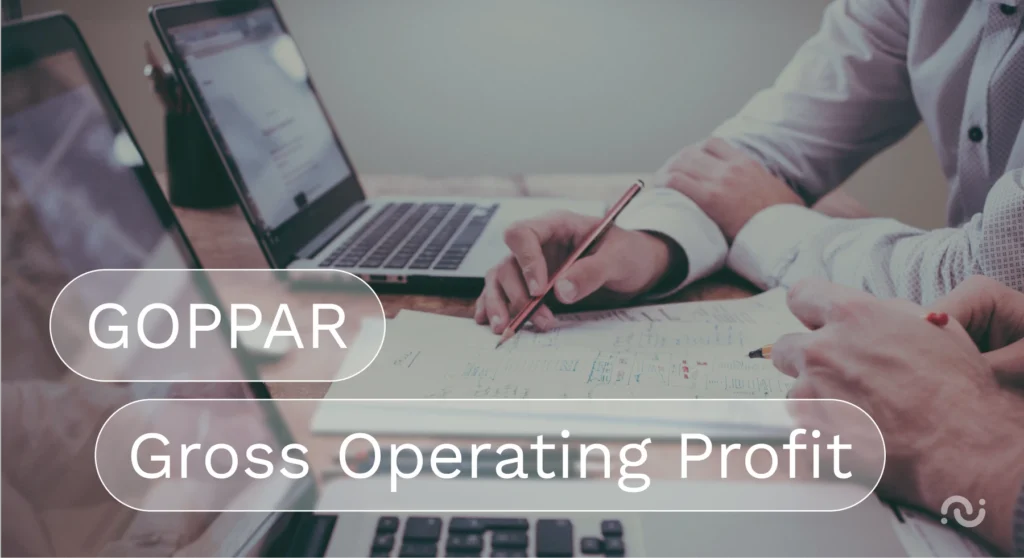All cards are on the table. What's your pick?
Tracking your hotel’s performance starts with gathering the right data and using it to see how your business is really doing. With accurate numbers, you can set realistic goals and KPIs that make sense for your hotel. Regularly reviewing these metrics gives you a clear picture of your progress over time and shows how you compare to competitors or industry benchmarks. It’s all about staying informed so you can make smart, confident decisions – for your team and your guests.
Here are five key hotel metrics to focus on. These will help you make smarter decisions and get the most value from your hotel data analytics.
What it is:
The occupancy rate shows the percentage of rooms currently booked at your property.
Why it is useful:
Tracking this metric and comparing it to industry averages helps you spot patterns – like peaks or dips in bookings – so you can plan smarter. For instance, if weekdays in March tend to be quiet, you could roll out a targeted discount campaign to bring in more guests. It is also a useful tool for fine-tuning staffing and resource allocation, ensuring you’re always prepared, no matter the situation.
How to calculate it:
OCCUPANCY PERCENTAGE = OCCUPIED ROOMS / AVAILABLE ROOMS.
For example, if 176 of your 250 rooms are occupied, then your occupancy rate is 176/250, which gives you 0.704, or 70.4%.

What it is:
The average daily rate is simply the average price guests pay for a room in your hotel.
Why it is useful:
Hotel room rates often change depending on the season, day of the week, and factors like expected occupancy. With rates shifting frequently, calculating your Average Daily Rate (ADR) can be a smart way to keep things competitive while ensuring your pricing stays profitable. It is a simple way to make sense of all the moving parts and stay ahead in the game.
How to calculate it:
ADR = TOTAL ROOM REVENUE / NUMBER OF OCCUPIED ROOMS.
For example, if you have 60 rooms occupied with a total revenue of €18,543 then your ADR is €18,543/60, which gives you an average daily room rate of €309.05.
What it is:
RevPAR is a different take on the ADR. This metric takes the overall room revenue into consideration but disregards how many rooms are occupied or vacant.
Why it is useful:
This figure, which amalgamates the occupation data with the revenue data, offers good insight into the overall profitability of the hotel at current occupation levels.
How to calculate it:
RevPAR = TOTAL REVENUE FROM ALL ROOMS / TOTAL NUMBER OF ROOMS.
For instance, if your hotel has 120 rooms, and you have received €23,500 in total from letting out some or all of these rooms, the calculation is €23,500/120 which gives a RevPAR of €195.83.

What it is:
GOPPAR provides a clear and valuable view of your per-room financial performance.
Why it is useful:
This metric goes beyond just room rates – it shows you exactly how much profit you are making per available room. It doesn’t stop at the room rate but includes all revenue streams, like restaurant meals, bar drinks, and spa treatments. It is a simple way to see the bigger picture and understand how every part of your business contributes to the bottom line.
How to calculate it:
GOPPAR = GROSS OPERATING PROFIT / NUMBER OF ROOMS.
For example, if you add together all the profits of the business from all areas of the hotel and it comes to a figure of €165,543 and you have 92 rooms, your GOPPAR is €165,543/92 = €1799.38.
What it is:
This score is a simple way to measure how satisfied your customers are.
Why it is useful:
Understanding how your customers feel about your business is key, and measuring customer satisfaction is a straightforward way to do it. We have broken down the importance of the CSAT score in hospitality in a dedicated article. Check it out to see how it can help your team deliver better experiences for your guests.
How to calculate it:
Calculating your CSAT score is noty as simple as plugging numbers into a formula, but it doesn’t have to be a headache either. By setting up the right systems and using reliable software, you can collect accurate data and get a dependable CSAT score. While the process can seem complex, it’s easy to streamline and even automate when done correctly.
Keeping an eye on your hotel’s metrics can bring real value to your business. By comparing your performance to industry standards or competitors, you can spot what needs attention and where there is room to improve. The key is to track these metrics regularly, using the data to guide smarter decisions and focus on what matters most.
You can use HiJiffy’s Hotel Benchmarking Tool to measure your hotel’s performance compared to industry standards and peers.
Tracking hotel performance metrics doesn’t have to be difficult. When evaluating tools and systems, consider what metrics they can track for you. HiJiffy’s Guest Communications Hub simplifies this process by using conversational AI to automate CSAT calculations. It delivers clear, reliable metrics and puts them into the bigger picture of your guest communication insights, saving you time and effort.
For more hotel metrics and explanations of hotel industry jargon, take a look at our glossary page.
Sign up for our monthly newsletter to receive free resources and updates on impactful AI applications in hospitality.